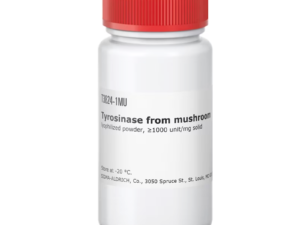Description
Title: Mannanase: A Powerful Enzyme with Wide-Ranging Applications
Introduction
Mannanase is an enzyme that has gained significant attention in recent years due to its wide-ranging applications in various industries. This enzyme, also known as β-mannanase, is a type of glycoside hydrolase that catalyzes the hydrolysis of β-1,4 bonds in mannans, glucomannans, and galactomannans, which are complex polysaccharides found in the cell walls of plants and some microorganisms.
In this article, we will explore the properties, sources, and applications of mannanase, highlighting its potential to revolutionize various industries, including food, feed, biofuel, and pulp and paper.
Properties of Mannanase
Mannanase is a versatile enzyme that exhibits several unique properties, making it a valuable tool in various applications. It is active over a wide range of temperatures and pH levels, with optimum activity typically observed between 40-60°C and pH 5-7. This property makes mannanase suitable for use in various industrial processes, including those that operate under extreme conditions.
Moreover, mannanase is highly specific, targeting only mannans, glucomannans, and galactomannans, and leaving other polysaccharides intact. This specificity ensures that mannanase does not interfere with other processes, making it an ideal additive in various applications.
Sources of Mannanase
Mannanase is produced by various microorganisms, including bacteria, fungi, and yeast. Some of the most common sources of mannanase include Bacillus, Aspergillus, and Trichoderma species. These microorganisms produce mannanase as a defense mechanism against other microorganisms that use mannans as a carbon source.
Industrial Applications of Mannanase
Food Industry
In the food industry, mannanase is used as a processing aid to improve the digestibility and nutritional value of various foods. It is commonly used in the production of soy milk, tofu, and other soy-based products, where it helps to break down the indigestible sugars in soybeans, improving their nutritional value and reducing the flatulence associated with their consumption.
Moreover, mannanase is used in the brewing industry to improve the filtration of beer, reducing the time and cost associated with the process. It is also used in the production of fruit juices, where it helps to break down pectin, improving the clarity and filtration of the juice.
Biofuel Industry
Mannanase has significant potential in the biofuel industry, where it is used to break down the complex polysaccharides in biomass, releasing fermentable sugars that can be converted into bioethanol. The use of mannanase in the biofuel industry reduces the need for harsh chemical treatments, making the process more environmentally friendly and cost-effective.
Feed Industry
In the feed industry, mannanase is used to improve the digestibility and nutritional value of various feedstuffs, including soybean meal, wheat bran, and corn gluten feed. By breaking down the complex polysaccharides in these feedstuffs, mannanase improves their nutritional value, reducing the need for expensive feed additives and improving animal health and performance.
Pulp and Paper Industry
Mannanase is also used in the pulp and paper industry, where it is used to improve the bleachability and brightness of pulp. By breaking down the mannans in pulp, mannanase reduces the amount of bleach required, improving the environmental sustainability of the process and reducing costs.
Conclusion
Mannanase is a powerful enzyme with wide-ranging applications in various industries. Its unique properties, including its versatility, specificity, and stability, make it an ideal additive in various processes, improving efficiency, reducing costs, and enhancing sustainability. As research continues, we can expect to see even more innovative uses for mannanase, further cementing its role as a valuable tool in various industries.











Reviews
There are no reviews yet.